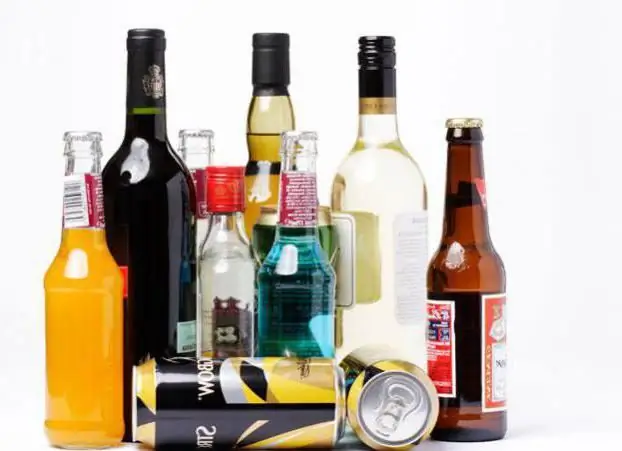2026 Author: Isabella Gilson | [email protected]. Last modified: 2025-01-23 12:50:30
Sometimes you can meet the question, what is the food supplement E-500? The "E" numbers in the list of ingredients of various products replace the chemical or generic name of specific nutritional supplements. They are used to improve the color, taste, texture, or prevent spoilage of food.

What is this?
Food supplements have been used for centuries. The ancient Romans used spices such as saffron to give their food a rich yellow color. S alt and vinegar were used to preserve meat and vegetables for long shelf life.
In the 1960s, manufacturers decided to compile a standardized list of these additives. In Europe, they are called E numbers (this letter stands for "Europe"). Australia simply uses their code number.
So vitamin C will be called E300 in Europe. In Australia, it can be found on labels with the code number 300, such as "food acid 300", "ascorbic acid 300" or "vitamin C 300".
Which supplements are marked with an "E"?
Before you know if a food is dangerous or notadditive E500, you should find out which groups the substances marked with this letter are distributed into. This classification is as follows:
- From E100 to E199: food coloring. For example, saffron is "food color 164" in Australia (or E164 in Europe). Other spices commonly used to color food include turmeric (E100) and paprika (E160c).
- From E200 to E299: preservatives. These substances prevent the growth of microbes in food that can cause disease. E220, for example, is sulfur dioxide, a preservative commonly used in wine to stop acetic acid bacteria from turning wine into vinegar.
- From E300 to E399: antioxidants. Vitamin C (E300) falls into this category.
- From E400 to E499: thickeners, emulsifiers and stabilizers. Thickeners are commonly used in soups or sauces. Emulsifiers help mix oily and watery substances like mayonnaise. Without them, the oily and watery part may separate into layers.
- From E500 to E599: acidity regulators and anti-caking agents. Sodium bicarbonate (food additive E500) commonly known as baking soda, it regulates acidity.

- E600-E699: Flavor enhancers, including monosodium glutamate (E621).
- E700-E999: Sweeteners, blowing agents and gases used in food packaging such as nitrogen gas (E941). It is used in most potato chip industries as it prevents them from oxidizing.
Many substancesmarked with the letter "E" with a number, are substances of natural origin, such as vitamins B1 (E101) and even oxygen (E948).
What is E500?
Some housewives have a very rough idea of how most baking ingredients are made. Everyone knows that eggs come from chickens, flour from ground grains, butter from cows, sugar from plants (beets or cane). All this looks natural and does not cause concern. But when E500 is mentioned, some people get worried. Sometimes the ingredient list says it's baking soda or baking powder. But sometimes baking powder-baking powder is also found in the composition of the product.
Are these terms synonymous? Everyone knows that baking soda is a white, crumbly powder. In other words, sodium bicarbonate, which is the ingredient for baking. This is an alkaline substance, which in its pure form has a bitter taste. When combined with an acid, such as vinegar, it produces carbon dioxide, which causes the baking mixture to expand and fill the resulting cavities with air. Therefore, such a food additive is actively used in baking pies and porous bread. It is sodium bicarbonate - food additive E500. Sodium bicarbonate or baking soda are other names for it.

Baking powder, referred to as baking powder, consists of several ingredients, and one of them is sodium bicarbonate. Other components are acid (most often citric) and a filler, suchlike cornmeal to absorb moisture. This is a more versatile version of baking powder, most often used at home. It includes sodium bicarbonate and the ingredients it combines with and causes a reaction, all you have to do is add water.
Therefore, the question of how to clean baking soda from the E500 supplement does not make sense. It's the same thing.
What is this substance?
Sodium bicarbonate is a sodium s alt and a bicarbonate. It should not be confused with sodium carbonate (soda, Na2CO3). As noted above, sodium bicarbonate is also known by the less scientific name "baking soda". It has many brand names, including "food additive E500". Sodium bicarbonate is a colorless crystalline solid that releases water and carbon dioxide at temperatures above 50°C. As a result, it turns into sodium carbonate.
It is used in food products as a baking powder. To do this, baking soda is mixed with a solid acid, such as citric acid. It is also used in effervescent dissolvable tablets and to soften hard water. This is explained by the fact that the substance is destroyed upon contact with acids and releases carbon dioxide. This causes a reaction that causes the dough to become fluffy.

Sodium carbonate is used in industry as a food additive E500 ii. What it is? This substance is a water-soluble sodium s alt of carbonic acid. If baking soda is mainly used for baking, carbonatesodium is mainly used to regulate the acidity of drinking water and to fuse milk protein with cocoa. Thus, the additive E500 ii is not contained in baking soda.
How is this substance used?
As noted above, in cooking, baking soda is mainly used as a baking powder. When it reacts with acid, carbon dioxide is released, which causes the dough to expand and develop the characteristic texture and graininess in pancakes, pies, breads, and other baked and fried foods. Acidic compounds that cause this reaction include various phosphates, citric acid, lemon juice, yogurt, buttermilk, cocoa, and vinegar. Baking soda can be used with yeast dough, which makes the product lighter in color and less acidic.

Can I not mix with acid?
Heating by itself can also cause sodium bicarbonate to act as a leavening agent in baking due to thermal decomposition and release of carbon dioxide. When used alone in this way, without the presence of an acidic component, only half of the available CO2 is emitted. In addition, in the absence of acid, the thermal decomposition of soda leads to the formation of sodium carbonate, which is highly alkaline. It imparts a bitter, soapy taste and yellow color to the baked product.
Other applications
Besides this, there are other areas of use of the food additive E500. The baking soda containscompounds that cause other useful reactions.

So, a pinch of baking soda in a pot of boiling water speeds up the softening of peas, lentils and beans. In addition, its addition reduces bloating from the consumption of various types of cabbage. You can put some baking soda in your cheese fondue to make it fluffier and easier to digest.
Sodium bicarbonate neutralizes or reduces excess acid in foods. This is also very important when making jams with very tart fruits like sea buckthorn and rhubarb, as it softens the flavor so you don't have to add a lot of sugar. Baking soda can also be used to neutralize too much vinegar or lemon juice during cooking, if they were added in large quantities by mistake.
Sodium bicarbonate is sometimes used in cooking green vegetables because it gives them a bright green color that is described as artificial looking. This is due to its reaction with chlorophyll and the formation of chlorophyllin. However, it tends to affect flavor, texture, and nutrient content.

The additive is also used in Asian and Latin American cuisine to tenderize meat. It can be used in breaded fried foods to firm up the crust and release steam when heated. This prevents the breading from blowing away during cooking.
Is it dangerous for he alth?
FoodAdditive E500 is generally safe for use in food products and there is no maximum allowable dose (by quantification). Just use as much as you need for the desired effect.
Recommended:
Does the human body need sugar? The benefits and harms of sugar, its impact on he alth

What is sugar and what did people use it for? How does the substance behave in the human body? What are the types of sugar? How harmful and useful is it? Is there an alternative or substitutes? Myths about the benefits and harms of sugar. We will consider all this in the article
Sodium guanylate: dietary supplement formula, effects on the human body

Disodium guanylate is a food additive whose main ability is to improve the organoleptic characteristics of the product. On the packaging of finished products, this additive can be seen under the symbol E627. What is the harm of this supplement for the body?
Alcohol - what is it? Dry alcohol. Benefits of alcohol. Impact on the human body

Against the backdrop of ongoing talk about the dangers of alcohol, a new kind of it has appeared - powdered alcohol. It promises to become even more affordable and easier to transport and use
Silicon dioxide: impact on the human body, application in the food industry. Food emulsifier E551

It is difficult to overestimate the effect of silicon dioxide on the human body. The mineral is responsible for bone elasticity and flexibility, nail strength, hair condition, and helps tissues recover faster. Academician V. I. Vernadsky rightly argued that no organism can develop and exist without silicon
What foods clean blood vessels: he althy recipes, the impact of nutrition on the human body and reviews

Using products to clean blood vessels from cholesterol plaques. Rules for the preparation of tinctures and decoctions. Causes of plaques on the walls of blood vessels and prevention of their occurrence. User reviews and recommendations

